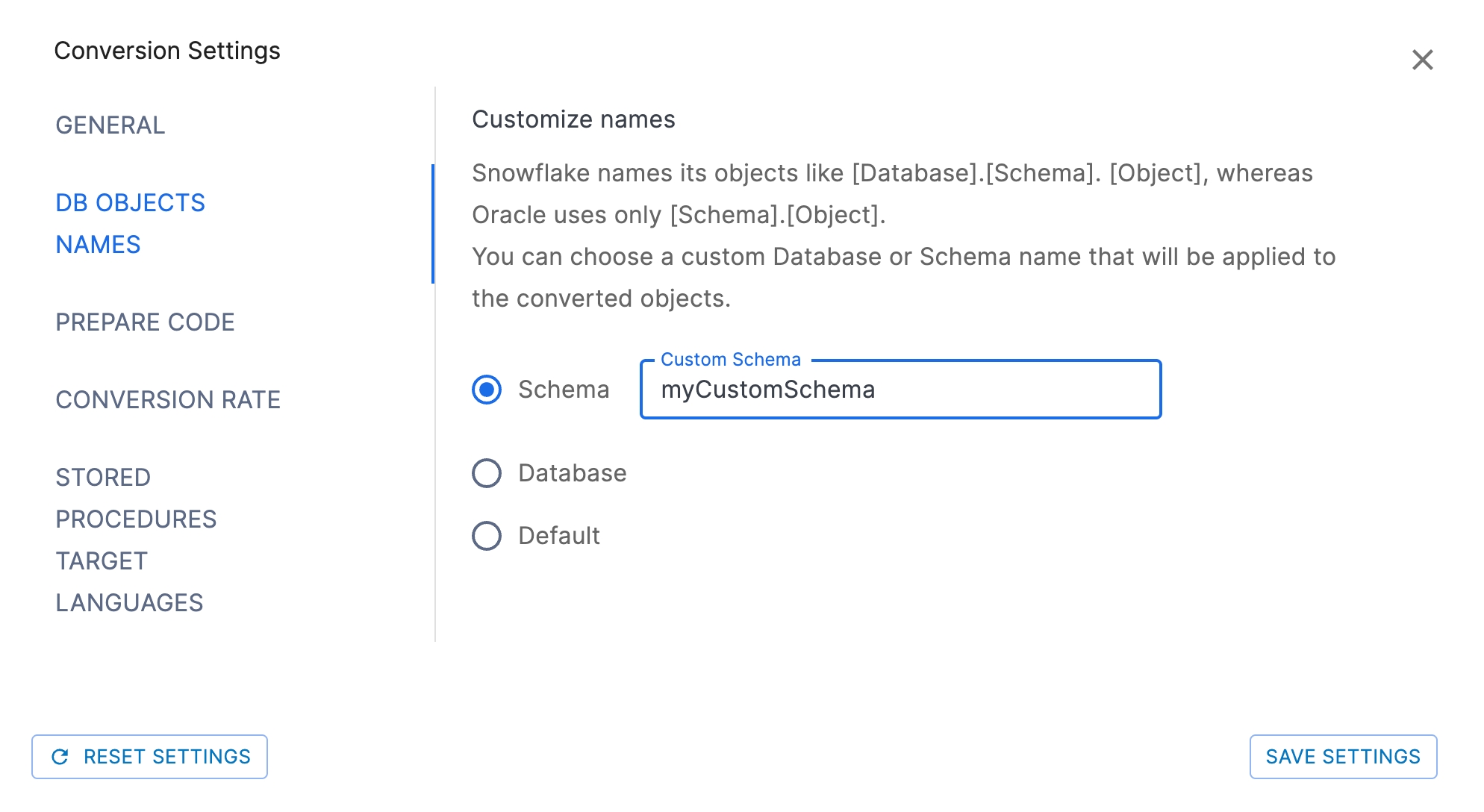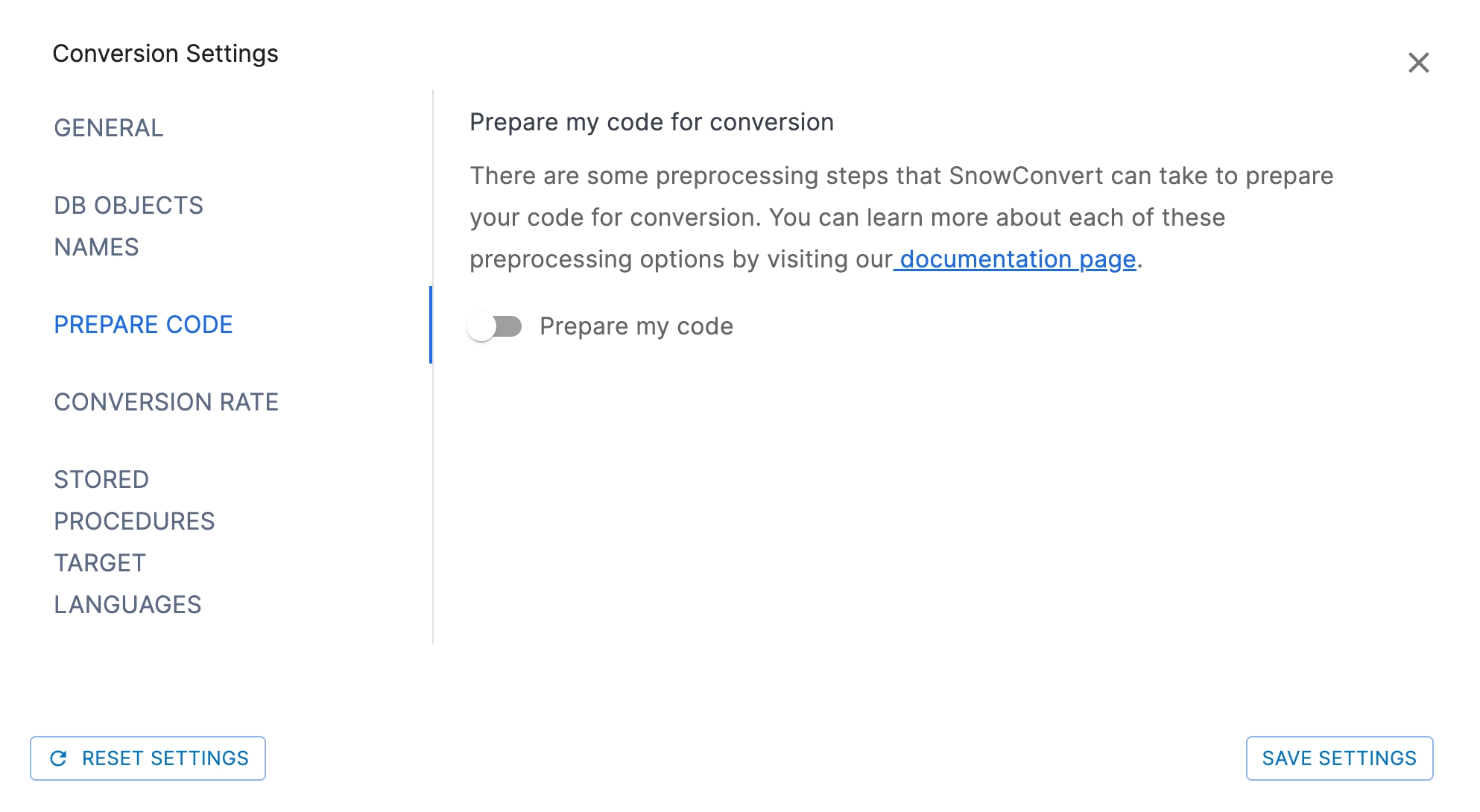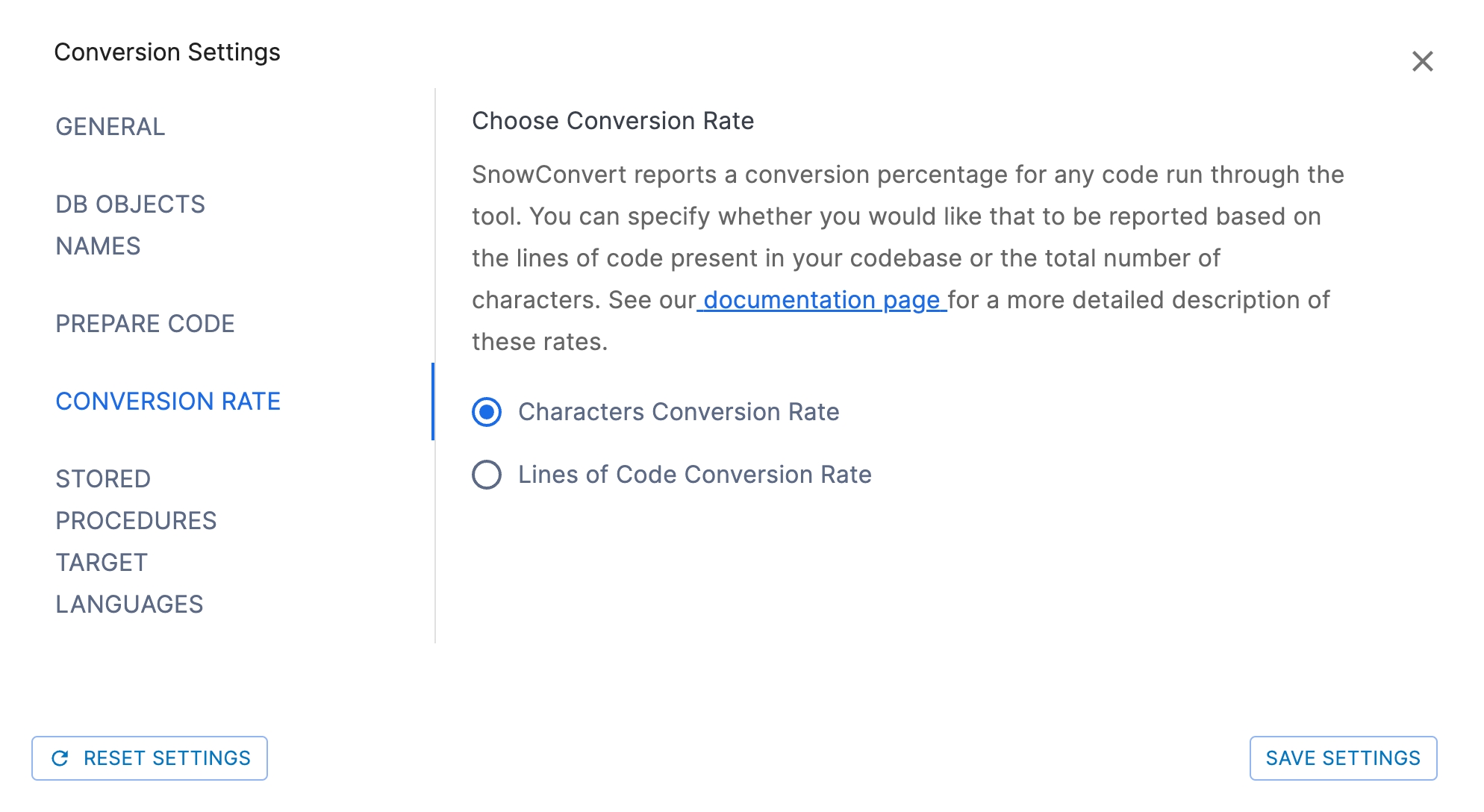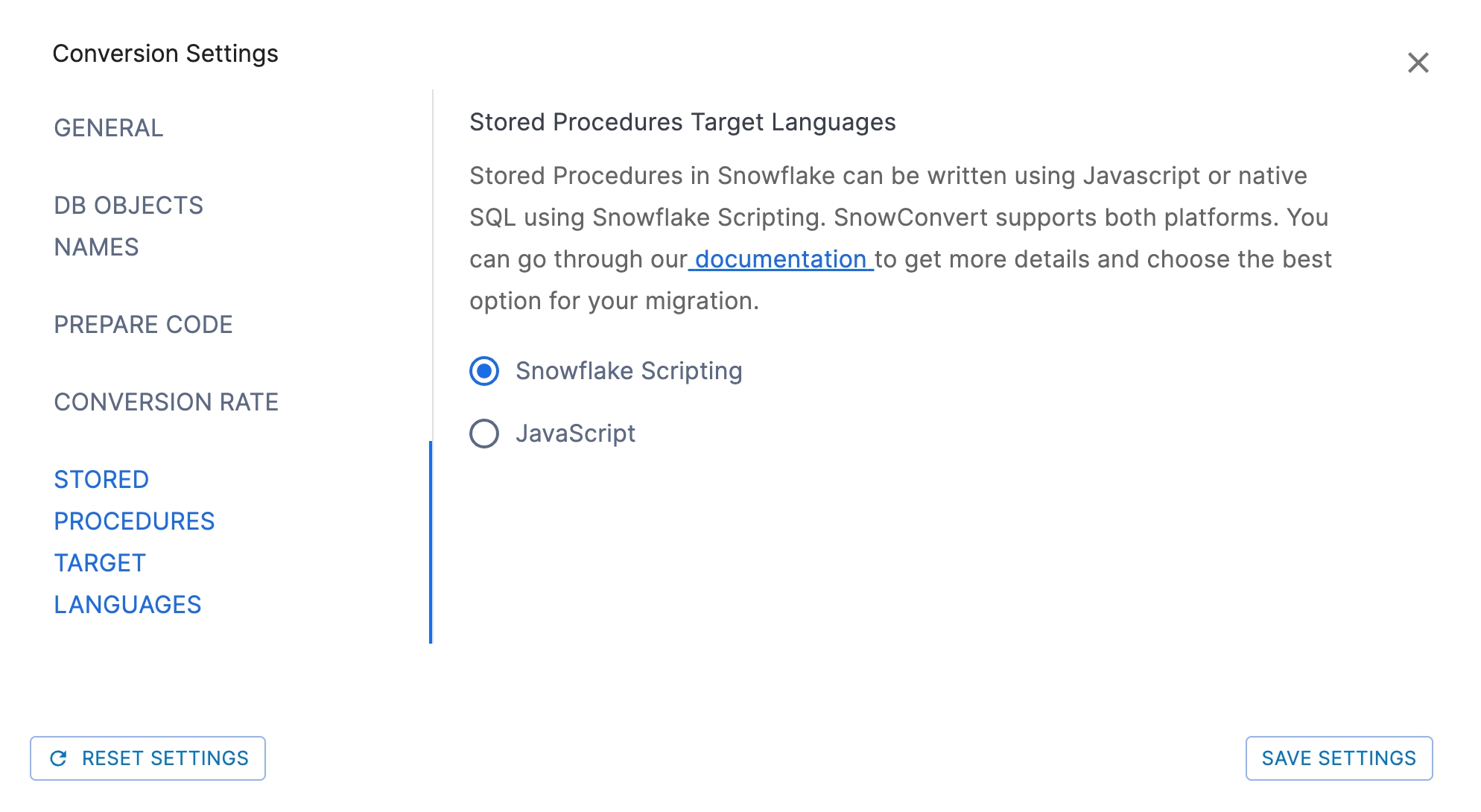Oracle Conversion Settings
General Conversion Settings
Object Conversion

Transform Synonyms: Flag to indicate whether or not Synonyms should be transformed. By default, it's set to true.
Transform Packages to new Schemas: Flag to indicate whether or not the Packages should be transformed to new Schemas.
Please check the naming of the procedure enabling and disabling the flag:
Transform Date as Timestamp:
Flag to indicate whether SYSDATE should be transformed into CURRENT_DATE or CURRENT_TIMESTAMP. This will also affect all DATE columns that will be transformed to TIMESTAMP.
Transform OUTER JOINS to ANSI Syntax: Flag to indicate whether Outer Joins should be transformed to only ANSI syntax.
Data Conversion Types: You can upload a JSON file below to define specific data types considering data type origin and column name.
General Result Tab

Comment objects with missing dependencies: This flag indicates whether the user wants to comment on nodes with missing dependencies.
Set encoding of the input files: Check General Conversion Settings for more details.
DB Objects Names Settings

Schema: The string value specifies the custom schema name to apply. If not specified, the original database name will be used. Example: DB1.myCustomSchema.Table1.
Database: The string value specifies the custom database name to apply. Example: MyCustomDB.PUBLIC.Table1.
Default: None of the above settings will be used in the object names.
Prepare Code Settings

Description
Prepare my code: Flag to indicate whether the input code should be processed before parsing and transformation. This can be useful to improve the parsing process. By default, it's set to FALSE.\
Splits the input code top-level objects into multiple files. The containing folders would be organized as follows:
Copy
Example
Input
Output
Assume that the name of the files is the name of the top-level objects in the input files.
Inside the "schema name" folder, there should be as many files as top-level objects in the input code. Also, it is possible to have copies of some files when multiple same-type top-level objects have the same name. In this case, the file names will be enumerated in ascending order.

Requirements
To identify top-level objects, a tag must be included in a comment before their declaration. Our Extraction scripts generate these tags.
The tag should follow the next format:
<sc-top_level_object_type>top_level_object_name</sc-top_level_object_type>
You can follow the next example:
Conversion Rate Settings

On this page, you can choose whether the successfully converted code percentage is calculated using lines of code or using the total number of characters. The character conversion rate is the default option. You can read the entire rate documentation on the documentation page.
Stored Procedures Target Languages Settings

On this page, you can choose whether stored procedures are migrated to JavaScript embedded in Snow SQL, or to Snowflake Scripting. The default option is Snowflake Scripting.
Reset Settings: The reset settings option appears on every page. If you've made changes, you can reset SnowConvert to its original default settings.
Last updated
